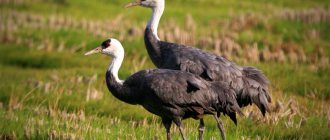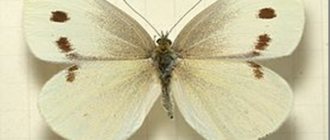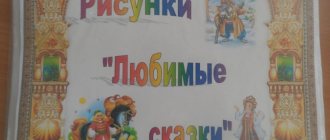Our projects page 204: Project “International Red Book”
The goal of the project: to learn about the history of the creation of the international “Red Book”, its goals, about the rare inhabitants of our planet, to find information about rare animals from the Red Book.
Project plan:
- History of the creation of the International Red Book
- Structure of the Red Book
- Orangutan is a close relative of humans
- Orangutan lifestyle
- Appearance, population
- Protecting orangutans
- Presentation example
History and background of creation
The diversity of flora and fauna on the planet is amazing. However, some species are gradually disappearing. For example, in 1627, the last tour was destroyed near Warsaw, a sea cow was killed near the Commander Islands in 1788, and in 1899 a passenger pigeon was shot in the USA.
In those days, the black market actively flourished, where there was illegal trade in wild animals and their individual parts. It seemed to people that the planet’s riches were inexhaustible; poachers mercilessly exterminated representatives of the fauna for the sake of profit and the search for food. Many species died because there were no suitable habitats left for them.
In the 20th century, the following were under threat of complete extinction from the planet:
- 1150 mammals;
- 1200 birds;
- 296 reptiles;
- 146 amphibians;
- 750 fish;
- 935 shellfish;
- 555 insects.
The official website of the International Union for Conservation of Nature (IUCN) states that people will never again see the Beiji dolphin, Mariana mallard, black rhinoceros, as well as the Caribbean monk seal and Alaotran grebe.
Humanity began to realize the real threat to animal and plant diversity. The development of measures to preserve populations and help them survive in the outside world began. In 1928, the International Bureau for the Protection of Nature was created, and in 1948 the Commission on Rare and Endangered Species began its work, which included scientists from dozens of countries.
The first pilot project of the Red Book of the World was released in 1963. The second edition was presented to the public 3 years later; it included 5 volumes, published and expanded until 1971. The author of the creator is the English researcher Peter Scott, it was he who put forward the proposal to choose a symbolic color for the cover, expressing danger, anxiety and the desire for life.
The third version was published in 1972, and the final fourth version in 1980. A few years later, an alternative version was developed, in which animals in need of protection are distributed into 9 statuses.
Scott was inspired by the giant panda to create the unique IUCN Red List. It was her image that became the famous logo of the World Wildlife Fund. The main purpose of the publication is to identify and control those species of organisms that are threatened with extinction and that require special animal protection measures.
Why was the book called red?
The red color of the book means a prohibitive color: stop, don’t destroy, stop! This cannot continue! The color red is a signal of alarm and danger, it is an SOS signal that animals and plants give us, that is, the book was named that way in order to attract people’s attention and try to stop the barbaric destruction of the surrounding world.
The Red Book is not a law on nature conservation, it is only facts collected by scientists about animals and plants. With its color it forces everyone to pay attention to this danger and in this case warns us against the serious consequences that may occur with the death of entire species of animals and plants.
The Red Book includes those species of plants and animals that have been formed for more than one millennium, and now, due to the fault of man, are facing a catastrophe - complete extinction. Alas, nature will not repeat what it has already created once...
Red List of Threatened Species
In addition to the Red Book, the IUCN produces special lists of threatened species. The first of them is dated 1988. According to the idea of the IUCN, each biological species has its own conservation status. There are 7 protection statuses in total. The first two of these are assigned to species that are either completely extinct (EX) or extinct in the wild (EW). Next come three more statuses:
- CR – on the verge of destruction;
- EN – endangered species;
- VU – vulnerable species.
Finally, the last two statuses are assigned to species that are close to vulnerable (NT) or not at all of concern (LC).
It is important to note that the International Red Book is not a legal document; rather, it is a reference book containing the most general recommendations for nature conservation.
Animals of the Red Book of Russia
The Red Book lists hundreds of animal species. Let's point out the most famous of them.
Amur tiger
Amur tiger. Lives in the Khabarovsk and Primorsky territories. Due to their beautiful skin, Amur tigers were hunted, and by 1940 their numbers had dropped to 40 individuals. Measures to protect this cat have led to the fact that today there are about 500 Amur tigers living in Russia.
Polar bear
Polar bear. Lives in the Arctic. About 5-7 thousand polar bears live on Russian territory. Although they have no natural enemies, due to the shooting of bears by hunters, the low birth rate of the species and the melting of Arctic ice, the bear population is gradually declining.
Russian muskrat
Russian muskrat. This species belongs to the subfamily of moles. Russian muskrats live in the basin of the Dnieper, Volga, Don, and Ural rivers. The extinction of the Russian muskrat is caused by pollution of water bodies, the construction of hydroelectric power stations, and deforestation in floodplains. If in 1970 there were 69,000 Russian muskrats living on the territory of the RSFSR (as the Russian Federation was then called), today their number has decreased to 35,000 individuals.
Plants of the Red Book of Russia
Here are some examples of rare plants from the Red Book of Russia:
Snowdrop latifolia
Snowdrop broadleaf. It grows in the Caucasus, mainly in North Ossetia. The snowdrop population is declining due to grazing and road construction.
Altai onion
Altai onion. These plants can be found in the Altai Territory and adjacent regions. Onions mainly grow on rocks. Has a rarity category of 3.
Wallenberg's ditty.
Wallenberg's ditty. An endangered species that can be found in the Leningrad or Tver regions. Chastuha is disappearing due to water pollution, as it grows on the bottom of rivers at a depth of 0.5-1.5 m.
Pistachio obtufolia
Pistachio obtufolia. This tree grows in the Crimea and the Caucasus, and can reach a height of 12 m. The pistachio tree is dying out due to the active construction of tourist facilities in its habitat areas.
Wormwood Senyavinskaya.
Wormwood Senyavinskaya. A small shrub up to 15 cm high, growing only in Chukotka. Found in the tundra or on the slopes of hills.
Red books of other countries of the world
The first edition of the Red Book of Belarus was undertaken in 1981. At that time, its pages included 80 species of animals and 85 rare and endangered plant species. The second edition of the Red Book was published in 1993. It already included 182 species of animals, 180 of plants, 17 of fungi and 17 of lichens.
The second edition of the Red Book of Ukraine (1996) lists 381 species of animals (including 67 species of birds), 531 species of plants and fungi. Compared to the first edition (1976), the number of animal and plant species listed in the Red Book of Ukraine has increased almost 4 times.
The Red Book of Tajikistan was published in 1988 and has not been reprinted. It includes 58 species of invertebrates, 4 fish, 21 reptiles, 37 birds, 42 mammals, 226 plants, of which 4 are fungi, 14 are mosses and ferns, 27 are trees and shrubs, and 181 are herbaceous.
The Red Book of Kazakhstan has three editions. The 1st was published in 1978 (87 species and subspecies of vertebrates), the 2nd - in 1991 (129 species and subspecies of vertebrates, invertebrates were introduced for the first time - 105 species). The 3rd edition was published in 1996 and is one part devoted to endangered animal taxa. It includes 125 species and subspecies of vertebrates: fish and cyclostomes (16), amphibians (3), reptiles (10), birds (56), mammals (40).
The Red Book of Kyrgyzstan was published in 1985 and has not been reprinted. It included 13 species of mammals, 20 of birds, 3 of reptiles, 1 of fish, 5 of insects, and 65 species of higher plants.
The first edition of the Red Book of Turkmenistan was published in 1985. It consisted of two parts (“Plants” and “Animals”) and included 27 species of mammals, 35 of birds, 30 of reptiles, 1 of amphibians and 8 of fish, as well as 52 plant species. The second edition, containing new data on the status of threatened species, was published in 1999. It consists of two volumes. The first volume is “Invertebrates and Vertebrates,” which includes 152 species and subspecies of animals. The second volume, “Plants,” includes 109 species.
The Red Book of Uzbekistan was first published in 1983 (“Animals”) and then in 1984 (“Plants”) and contained information on 63 species of vertebrates and 163 species of plants.
The new Red Book of Uzbekistan includes 301 taxa of higher plants, 20 of mammals, 29 of birds, 16 of reptiles, 26 of fish, 3 of annelids, 14 of mollusks and 61 taxa of arthropods (invertebrates are included for the first time).
In 1989, the Red Book of Azerbaijan was created. This book includes 14 species of mammals, 36 species of birds, 13 species of amphibians and reptiles, 5 species of fish and 40 species of insects. Measures have been developed to preserve and increase the number of plants and animals included in the Red Book. Thanks to these measures, it was possible to prevent the final death of the goitered gazelle. According to an aerial survey conducted in October 1989, the number of goitered gazelles on the territory of the republic reached 12.8 thousand against 400 in 1968.








